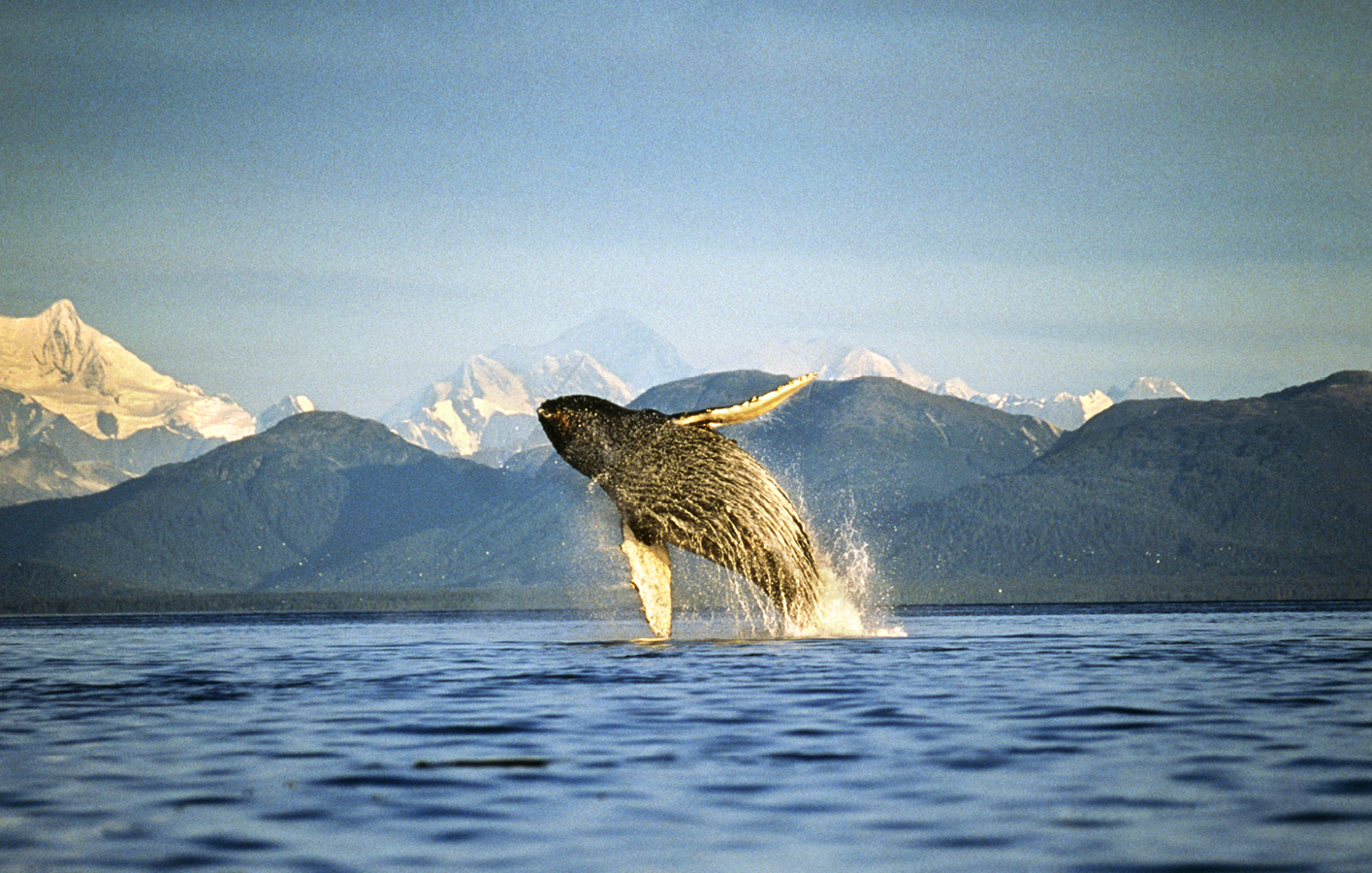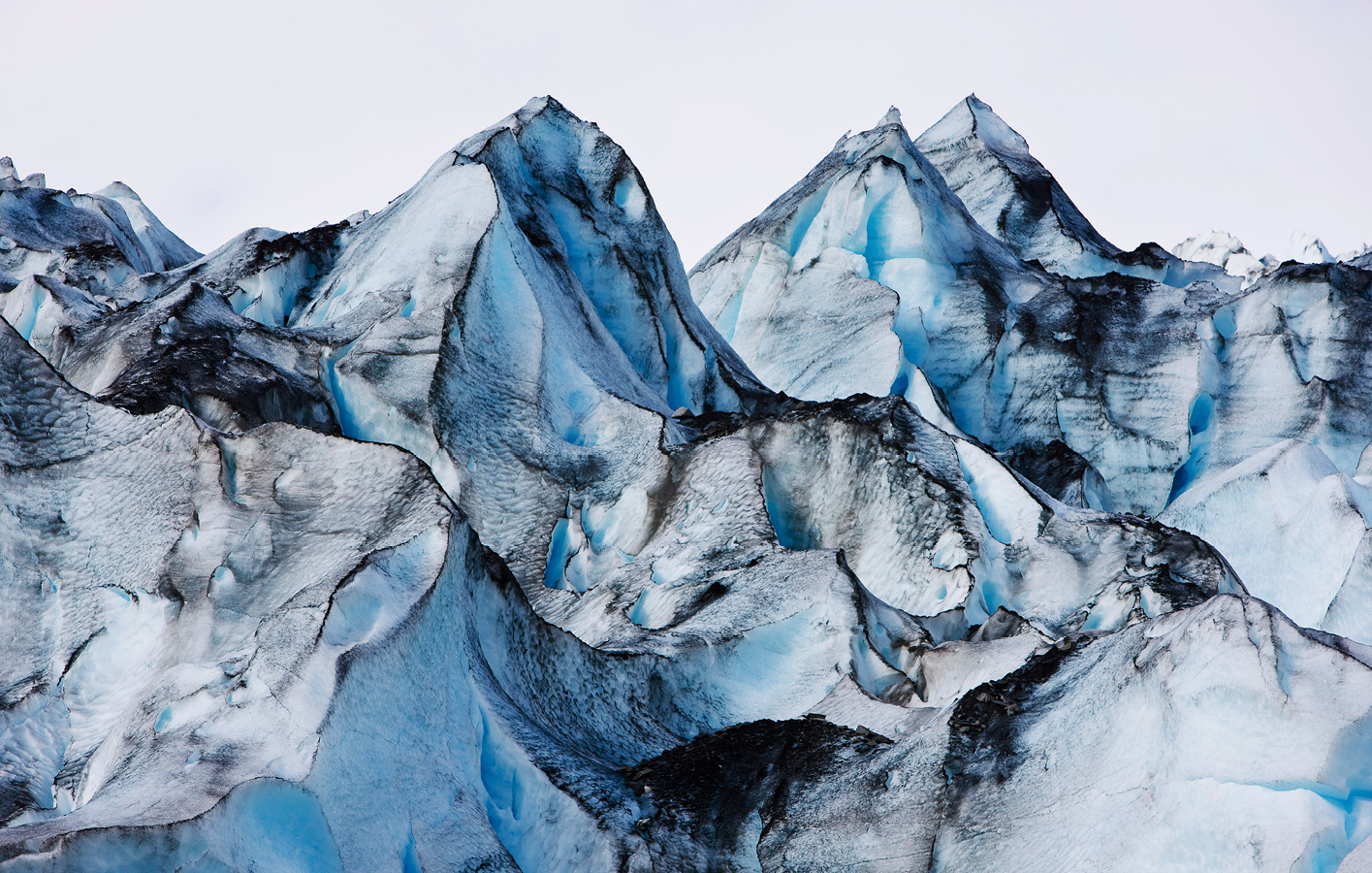WORDS
Ian Belcher
Crump! There it is again. The low menacing rumble reminiscent of heavy shelling. Each boom grows closer, deeper, more visceral, vibrating through my chest, heightening my senses.
Thirty minutes later, the frontline rears up before my kayak. Its artillery is natural, not man-made: vast chunks of ice calving off Shoup Glacier, a sinuous white and neon-blue vein that suggests a supersized toothpaste tube is being squeezed through Alaska’s Chugach mountains.
Shoup and its larger, louder sibling, Columbia, are two glacial aces in Prince William Sound’s exquisite deck of cards. Covering 10,000 square miles on the Gulf of Alaska, its 150 glaciers overlook the vertiginous fjords, forested bays and wonderfully wild beaches and islands that garnish some of the world’s highest coastal peaks: an Edenic wilderness seething with whales, salmon and otters, alongside eagles, puffins and bears. The ultimate way to explore its shoreline – indeed the only way to reach many narrow icy inlets – is by kayak.

My departure point for the six-day paddle, Valdez – America’s northernmost ice-free port – is where the planet’s largest economy headbutts the great outdoors. One side of the awe-inspiring fjord hosts 18 storage tanks: the terminus of the Trans-Alaska Pipeline that, since opening in 1977, has delivered 18 billion barrels of oil to waiting supertankers.
Impressive stats but my eclectic group, including a Colorado techie and New York trader, want to escape the harsh reality of 21st-century life, to lose ourselves in gloriously isolated nature. It doesn’t take long. Within minutes of boarding our kayaks a few miles outside Valdez, we’re gliding past thunderous waterfalls and savagely steep cliffs. Scotland on steroids.

They’re merely scenic canapés. The starter arrives soon afterwards. We paddle into Shoup Bay’s theatrical trinity of glacier, jagged peaks and viridian forest. Low tide necessitates dragging our kayaks through the shallow water linking it slower and upper levels: a numbing, painfully cold experience in rafting sandals.
‘Remember this sensation,’ urges Andy, one of two highly capable, dryly humorous guides. ‘Fall in and you’re unconscious within five minutes. Life expectancy is 15 minutes. Make sure your kayak’s straight on to waves from calving ice. Hit a chunk? Then let it bob down or slide off. Do not start rocking.’
We stop three-quarters of a mile from the glacier’s face. It groans, cracks and roars with rushing meltwater. ‘I know people who paddle right up to it,’ sighs Andy. ‘They haven’t had children yet. Darwin will prevail.’ Instead, we disembark, clambering up to a rock pool with widescreen views. Tremors from calving ice transform the sun-warmed water into a natural Jacuzzi.
Bald eagles circle overhead and, far below, 19,000 black-legged kittiwakes monopolise a small island. Their cacophonic cries serenade our evening campsite: Avalanche Beach next to Bear Alley. What could possibly go wrong?

Nothing, as it turns out. Fuelled by decent sleep, we push south into the main Valdez Arm, where the wilderness swallows us alive. Seals, otters and sea lions pop up around the kayaks, salmon roll beneath our paddles, and cormorants, loons and harlequin ducks provide a feathered escort.
At Sawmill Bay, the narrow river’s clogged with spawning pink salmon. It appears you could walk across their backs. Silver carcasses litter the bank, many merely nibbled or bitten once by spoilt, gorged predators. It’s enough to make fishermen on the Tay or Spey weep with envy. Prince William Sound has 300 similar spawning streams. More than a billion fry enter its waters each year.
The salmon enjoy a beautiful childhood. The coastline’s so relentlessly photogenic it’s easy to become blasé. ‘Where’s that?’ I ask, nodding to a showstopping amphitheatre of mountains and ocean. ‘Jack Bay,’ grunts Andy. ‘Just another inlet.’
Just as 17 Mile Beach, with a waterfall for washing, is just another campsite. Tonight, craving sushi, I cast a lure into its small river mouth. Within seconds I’ve hooked a plump salmon. Within 15 minutes I’m glazing its orange flesh with wasabi and soy (essential survival items for New York traders, apparently).
Add in a robust supper of steak, red wine and chocolate with campfire-melted marshmallows and I suffer the most panoramic indigestion of my life.
On day four, floating on a placid Pacific, I notice a distant tanker slipping past a large buoy and two tooth-shaped icebergs. It hasn’t always been so smooth. In March 1989, the Exxon Valdez, attempting to avoid ice from the Columbia Glacier, hit nearby Bligh Reef, unleashing an environmental catastrophe.
Around 11 million gallons of oil enveloped the pristine wilderness, killing 250,000 seabirds, hundreds of seals and eagles, 2,800 otters and22 orcas. You’d never know today. A £1.7 billion clean up and myriad winter storms have restored the natural order. Any remaining oil is buried and no longer threatens the ecosystem.
After contemplating the carnage, I gently slalom through bobbing ice from the same prolific source. One of the Earth’s fastest-retreating glaciers, calving millions of tonnes each day, Columbia now lies 15 miles behind its 1980 frontline. Long gone is the age when cruise ships approached through deep water, blasting foghorns to provoke icefalls for the entertainment of their passengers.
We spend a day navigating its floating ice before the pieces become too tightly packed to pass. Climbing onto the moraine, I study a layered Rothko abstract of sparkling snow, verdant meadows and freshly exposed rocks, before escaping the late afternoon sun by leaping off growlers (small ’bergs) into chest-deep water. Cut-price cryogenics.
Our final campsite, Glacier Island, sits high above the sound. Unable to sleep, I watch a vast armada of Columbia’s ice sailing out of its bay, the fragments turning a hundred shades of silver under a startlingly bright moon. Can the trip get any more memorable?
It can. On the final morning, two orcas arc past our kayaks, puffins zip around our heads and sea lions jostle us away from their colony at Bull Head. My memory card’s full. My superlatives exhausted. A chilled beer and hot shower await.
Shoup to Columbia Glacier six-day trip from £1,470pp; alaskasummer.com





